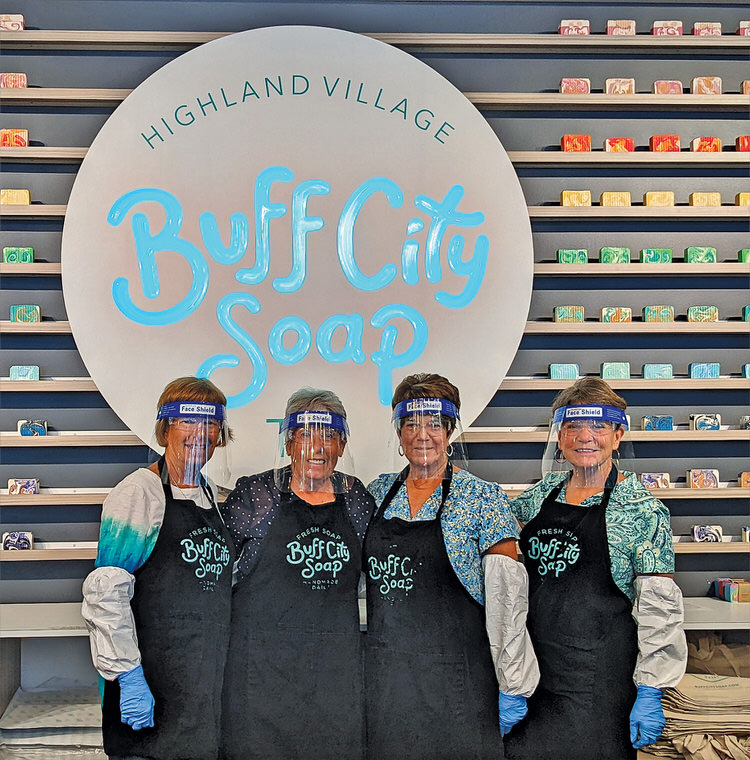
Girls on Wheels are “soap-erstars” at Buff City Soap.
Vicki Baker
Who would have thought that good old-fashioned soap would, more than four millenniums after its invention, still be one of humankind’s most powerful tools in fighting disease? Over the past couple of years, we’ve been reminded of this fact and of the simple magic of hand washing, with its unequaled germ-killing (and lifesaving) powers. Which means that possessing a truly fantastic bar of soap—sudsy, fragrant, and mood elevating—is more desirable than ever.
But to understand what makes a great soap, we have to go back in time. There are several origin stories (most set in ancient Babylon), all of which involve the accidental discovery that pairing wood ash with animal fat drippings (scientifically speaking, sodium or potassium hydroxide and a triglyceride) led to the miraculous chemical reaction now called saponification, which resulted in a highly effective grime-removing solid.
Heading to the nearest Buff City Soap, Girls on Wheels (Nancy Burns, Cassie Richardson, Susan Hebert, and Vicki Baker) raised the bar, designing and creating our very own handcrafted soap. Under the direction of a “soap master,” the fun and interactive workshop taught us how to use botanicals in making soap from scratch using the cold process method, and all using cruelty-free, non-toxic, natural ingredients.
Our first step was choosing our scent—no easy task, given the store’s more than 30 available. We circled around the store a couple of times, smelling all the amazing fragrances, and finally landed upon our own personal favorites.
Next up, selections of color, sprinkles, glitter, oils, and other natural additives. It was a bit of a mad scientist’s lab stocked with ingredients like gardenia petals, lemon zest, hemp seed oil, shea butter, charcoal, and tea tree oil and natural exfoliates like chopped loofah bits, crushed walnut shells, and poppy seeds.
Gloves, aprons, and face shields on! It was time to get down to business! Our soap master instructed us in mixing all the ingredients together (similar to making a cake), then layering it into a prepared soap mold. Finally, the piece de résistance—decorating the top with glitter and swirls!
The loaf was then set aside. Over the next three days, we anxiously waited for each block to cure. What would the inside look like? Would it turn out like we planned, or maybe something even better?
Once hardened, a large, crinkly cutter sliced the loaves into individual bars. A bar was born! Each batch unique and one of a kind; no two bars alike. Our goodies were boxed up, and we headed home—for a bath, of course! We needed to test what we’d created—each with its own luxurious, creamy lather and aroma.
